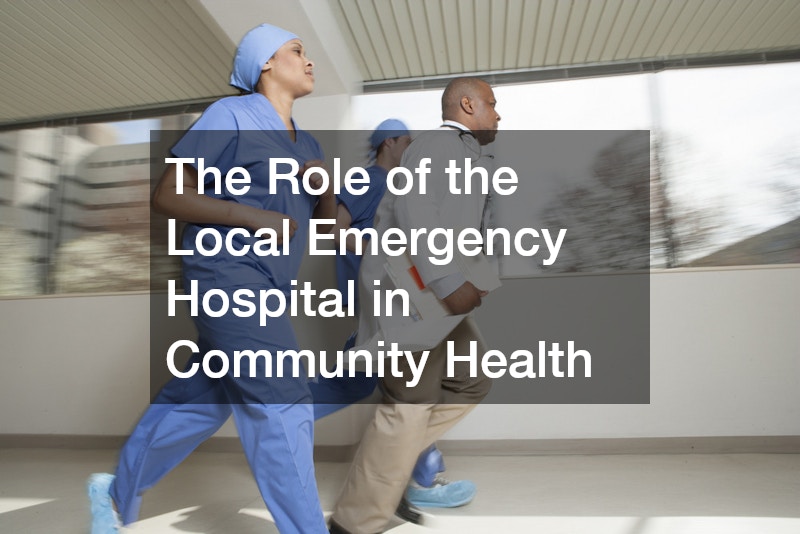Local emergency hospitals are critical components of the healthcare system, serving as the backbone of immediate medical care within communities. Their presence is vital in ensuring that urgent health needs are addressed promptly, thus minimizing morbidity and mortality rates among the population. This article delves into the multifaceted role that local emergency hospitals play in enhancing community health, the challenges they face, and how communities can support these indispensable institutions.
Providing Immediate Medical Care
Local emergency hospitals are equipped to deliver life-saving interventions and emergency services around the clock. With trained medical staff and efficient emergency response systems, they can address everything from heart attacks to traumatic injuries swiftly, thus reducing potential complications. Having access to immediate care not only saves lives but also reassures the community that medical help is readily available when needed.
The ability to tackle emergencies promptly also plays a crucial role in enhancing public health resilience. These institutions function as the first point of contact during medical crises, providing critical interventions that stabilize patients before further specialized treatment. This immediate care capability is one of the cornerstones of mitigating long-term health impacts within the community.
Facilitating Public Health Education
Local emergency hospitals are instrumental in disseminating valuable health information and educating the community on public health issues. They often host workshops, seminars, and health fairs that spread awareness about critical health and safety topics. Education provided by these hospitals plays a crucial role in enhancing community knowledge and preparedness against health risks.
These educational initiatives also focus on fostering an understanding of preventive healthcare practices. Regularly updated information on emerging health threats and recommended preventive measures empowers individuals to make informed health decisions. By educating the public, local emergency hospitals contribute to creating a health-conscious community that prioritizes welfare and safety.
Resource Limitations
Resource constraints are among the most pressing challenges faced by local emergency hospitals that affect their ability to deliver optimal care. Limited funding can result in shortages of critical medical supplies, inadequate staffing, and a lack of advanced equipment. These deficiencies hinder a hospital’s capacity to provide timely and effective medical care during emergencies.
Operating under financial restraints also restricts the development and implementation of new services or programs. Hospitals struggling with budgetary limitations might find it difficult to maintain existing infrastructure and expand to meet growing community needs. As costs continue to rise, securing sufficient funding remains a pervasive challenge.
Increasing Patient Load
The rising patient load is a significant challenge faced by many local emergency hospitals, often due to growing populations and increased rates of chronic illnesses. As patient numbers swell, hospitals may become overwhelmed, affecting their ability to provide timely and quality care. Overcrowding in emergency departments can lead to longer wait times and increased pressure on medical staff.
Strained hospital resources complicate the delivery of consistent care and may result in a decline in the quality of patient experiences. High patient-to-staff ratios limit personalized attention and care, leading to potential burnout among healthcare workers. Addressing these impacts is crucial for maintaining efficient healthcare service delivery.
Technological Advancements
Keeping up with rapid technological advancements is a continual challenge for local emergency hospitals striving to provide state-of-the-art care. New medical technologies offer opportunities for improved diagnostics, treatments, and efficiencies, but they often come with high costs and steep learning curves. Implementing new technologies can be difficult without adequate training and financial support.
The integration of advanced technologies requires skilled professionals to operate and maintain them, posing additional staffing challenges. Training healthcare personnel for new technology adoption can place additional burdens on already limited resources. Additionally, ensuring cybersecurity and protecting patient information in digital systems has become a heightened concern.
Volunteer Programs and Donations
Community involvement through volunteer programs is a valuable support mechanism for local emergency hospitals, providing essential manpower and relief to medical staff. Volunteers can assist in a range of roles, from administrative support to patient care assistance, enriching the hospital’s workforce. Volunteer engagement also fosters stronger community-hospital relationships and builds trust in the healthcare system.
Donations are another critical form of community support, providing hospitals with the necessary financial resources to improve infrastructure and expand services. Contributions from individuals, businesses, and charitable organizations can fund equipment purchases, facility upgrades, and patient care initiatives. Such financial backing ensures that hospitals can continue to deliver essential services amidst funding challenges.
Advocating for Policy Changes
Community advocacy for policy changes plays a crucial role in shaping an environment that sustains and enhances the capabilities of local emergency hospitals. Advocacy efforts can influence decisions related to healthcare funding, infrastructure development, and resource allocation. Rallying for policy reforms helps ensure hospitals receive the necessary support to operate efficiently and effectively.
Local emergency hospitals are indispensable to community health, functioning as both immediate caregivers and proactive health champions. Despite facing significant challenges, these institutions continue to provide vital services, supported by dedicated staff and resource optimization. Community involvement through volunteerism, donations, health screenings, and advocacy is essential in fortifying hospital operations and fostering a collaborative healthcare network.



